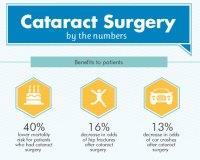Warning That Your Kid May Need To See An Optometrist: Adult Insights From Specialists
Warning That Your Kid May Need To See An Optometrist: Adult Insights From Specialists
Blog Article
Uploaded By-Peters Miles
As a moms and dad, you play a critical duty in your child's health, specifically when it concerns their vision. You may discover particular behaviors that can signal a demand for an eye test. Scrunching up your eyes, frequent eye massaging, or complaints of frustrations can be greater than simply minor inconveniences. Recognizing these indicators is essential for your youngster's development. So, what should you search for following? Allow's discover the common signs and symptoms that could suggest a vision trouble.
Common Signs And Symptoms of Vision Issues in Children
When you observe your child dealing with daily activities, maybe a sign of vision problems.
Search for signs and symptoms like squinting, rubbing their eyes regularly, or turning their head to see much better. If they have actually difficulty analysis or seem to lose their location commonly, that's another indication.
just click the next website could also see them complaining regarding migraines or experiencing eye stress after prolonged periods of reading or using displays.
Additionally, if your kid prevents activities that need excellent vision, like sporting activities or drawing, it's worth focusing on.
Watch for any type of uncommon habits, as these indications can point to underlying vision problems that require specialist evaluation.
Early discovery can make a big difference in their visual development.
Age-Specific Vision Milestones to Screen
Every moms and dad must keep an eye on their child's vision development as they grow.
At around 6 months, your child must start tracking relocating items. By age 1, they need to be able to concentrate on and recognize familiar faces.
Between 2 and 3 years, search for enhancements in hand-eye coordination, like stacking blocks or throwing a ball.
By age 4, children need to be able to identify forms and colors, and they may start to identify letters.
If your kid struggles with these landmarks, it's essential to remember. Checking their progress helps you capture possible problems early, guaranteeing they receive the vision treatment they need for an intense future.
Keep positive regarding their vision wellness!
When to Set Up an Eye Exam for Your Youngster
Monitoring your child's vision growth is very important, but understanding when to schedule an eye exam is just as important. The American Academy of Ophthalmology advises your youngster have their very first eye test at six months old.
Afterwards, schedule follow-ups at age three and again prior to they begin institution. If Related Web Page shows indicators of vision issues-- like squinting, difficulty analysis, or migraines-- don't wait for the next set up consultation.
Furthermore, if there's a family history of eye troubles, aggressive exams are vital. Watch on any kind of modifications in their vision or habits, and trust fund your reactions.
Routine examinations can assist capture potential issues early, guaranteeing your child has the best possibility for healthy sight.
Conclusion
In conclusion, staying alert to your youngster's visual habits is important for their eye health and wellness. If you notice any indicators like scrunching up your eyes, eye rubbing, or difficulty with analysis, don't be reluctant to set up an eye test. Bear in mind, very early detection can make a significant difference in their visual growth. Trust your impulses as a moms and dad, and ensure your kid gets the treatment they need to thrive. Routine exams can aid keep their eyes healthy for years ahead.
